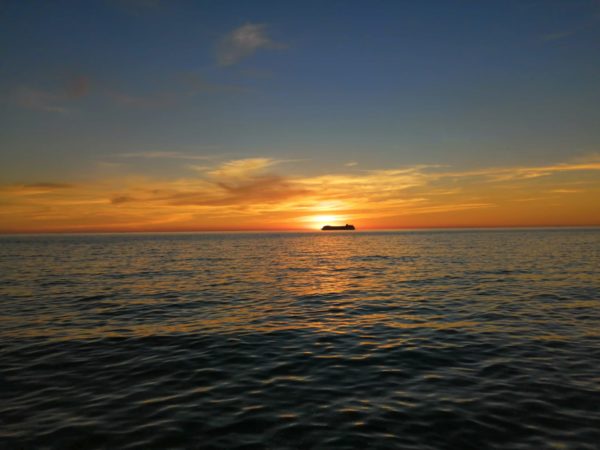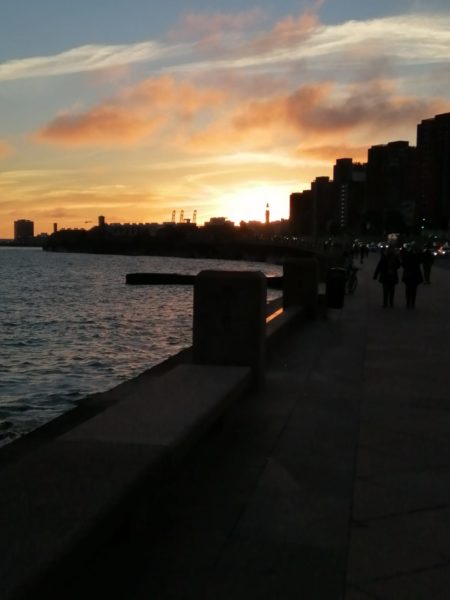“Every Cycle Ends One Day”
By Victor Rodriguez Oquel*


HAVANA TIMES – People looking out at the Universe through a telescope, can see the past while they are in the present, but what they are really seeing – according to scientists – is just the reflection of light bouncing back from celestial objects that have already existed.
It would seem that the cosmos holds, in its vast infinity, all of Time, at the same time: the past, our present and the future.
Is our present just unfolding along a timeline that already existed and will also be, but has already completely come to an end on Creation’s watch, and we are just heading towards our inescapable fate that no longer exists?
In the same way, there are small events in our past that seemed not to develop towards the future, when they were our present… passing into oblivion, but these moments have left a mark in our memories over time, a mark that is like the reflection of light from these celestial bodies that once existed, which we are still able to see.
Through a child’s eyes, houses seem like vast and exciting worlds to explore. Every house is an incomparable world within the universe of neighborhoods, cities, regions, small villages, fields and mountains. Like any other world where Life can flourish, these have their own flora and fauna of objects that formed part of other people’s lives, whether they are alive or dead.
Lights reflecting
Adan Cardenas was probably born in the late 19th century, or at the beginning of the 20th century. He was a goldsmith from Masaya, Nicaragua, a craftsman of minerals who was born before or during Jose Santos Zelaya’s Liberal revolution. He would have still been very young when Benjamin Zeledon fell in the Battle of Coyotepe Hill in 1912, during the US occupation of Nicaragua.
There’s no doubt that he belonged to the same generation as Sandino, who he might have known and spoken to. Maybe he told him he supported the revolt he began in the Segovia mountains to recover Nicaragua’s disgraced dignity. He also hoped that goldmines would recover their dignity, and no longer be looted by mining companies.
The old goldsmith passed away some months before the Managua earthquake, in 1972. That’s how his cycle ended, and his memory remains in the hearts of his loved ones.
Twenty years later, on one summer afternoon in the early ‘90s, an old blackened gold chain laid in the dark, in the back of a drawer, and in silence. An item that Adan himself had made in God knows what year, an elaborate Bismarck-style chain that was now lying between the fingers of his curious great-grandson explorer, who discovered it.
The goldsmith found gold in its pure state, it was taken to Masaya or he would have undertaken a long journey on the road (which would have taken several days) to reach the Chontales mine, when his supplier didn’t get to him in time with his order, for some reason or another.
There, he could find contraband gold that poor miners would sell for a cheaper price, exploited by La Luz y Los Angeles Mining Company (now La Luz Mines Ltd.), as well as by other mining companies that established themselves in the country.
As gold is a very malleable mineral in its pure state, the craftsman used silver, copper or zinc alloys. Once he’d melt all of the materials together, the sheet they’d form was stretched and cut into very fine wires. These are then cut into smaller pieces to create links that are then intertwined together until a chain is formed, a job that requires a lot of skill and patience.
That’s how one thing led to another: a simple blackened gold chain, forgotten in a drawer, stopped being a simple anonymous metal and had now found its origins again: Made by Adan Cardenas, a goldsmith from Masaya

The keys to an old wooden desk, bulging with mould, appeared in a corner of that very same drawr. In one of its drawers, made wretched by mould the color of opaque esmerald, there were some albums with photos of Italy and Amsterdam that were a testament to the time, unruly for some and terrible for others.
It was the mad ‘80s: crazy for those who benefitted from the Revolution and disastrous for those who died for that Revolution. In the photos, there were several young women aged 20-30, wearing ripped jeans, messy hairstyles like Madonna or Gloria Trevi. They were posing in an offensive way, looking like they were urinating on the rooftop of a building in Venice.
The photos were printed with a Fotos Fajardo stamp on the back, which used to be a studio where Masaya families would dress up to do photo sessions for weddings, baptisms, quinceaneras, etc.
It was the end of the photographic studio era, where damp hands would delicately handle celluloid film drowning in developer, erotic to the touch, which slowly and sensually reveals the figures that emerge in the small boxes of photographic film. Today, photos are bytes.
These basic events map our memory over the years, just like the Universe maps its spaces through the memory of its past lights.
Of course, the little explorer learned how to read, so he took a “quantic leap” that allowed him to discover more than objects, texts too now.
So, he went back to the old desk that was a lot more ruined now, where a bundle of letters with ochre-lined pages were enclosed in ripped envelopes with smudged ink.
The letters were the perfect whistleblowers of the sender’s feelings. Through those letters, we go on a journey through sadness, joy, resentment, love or nostalgia.
Jorge Luis Borges used to say that reading can be a form of happiness: it fills the sad with hope (maybe), reveals new curiosities to the restless, and provides consolation to those in exile. But they also nourish our intrigue and curiosity.
One day, every cycles ends
It could be said that the universe is also a “verb”, like reading, as it’s a permanent action. Those of us bewildered by the cosmos have understood that the universe destroys itself and rebuilds itself from its fragment, except for black holes that engulf everything without returning them. Reading is, in the same way, an eternal revelation that destroys and rebuilds our thoughts.
The curiosity of that young explorer introduced him to the logic that life is an everlasting cycle: he learned about Adan Cardenas’ cucle, the cycle of the unruly young women’s trip abroad, the coming and going of letters, the end of photographic studios.
All of this began and ended and ended up like light in his memory, until the young boy’s cycle fades, when the black hole of his grave engulfs him.
We came from dust, according to the Holy Scriptures. This isn’t compatible with the reality that says we come from copulation. The union of viscous liquids and flesh, even if we colloquially call the sexual act that conceives life as “echar un polvo” (“make dust”).
What’s certain is that we return to being dust as fertilizer for the earth, which nourishes every living organism. The Big Bang came from nothing, did it self-fertilize nothingness? Not even scientists know what existed before this indescribable and unique phenomenon that exploded in terms of genesis.
Exile is also a cycle: it ends when we return to our birthplace, or it just disappears as we integrate into our new worlds. However, the reality is that every cycle ends, one day.
*Victor Rodriguez Oquel: Nicaraguan, social communicator and cultural manager.





